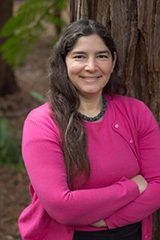Todd Barber
Senior Propulsion Engineer
NASA Jet Propulsion Laboratory
Todd Barber is a JPL senior propulsion engineer, wrapping up two decades as lead propulsion engineer on the Cassini mission to Saturn, following part-time work on the Mars Exploration Rover (MER) mission, Deep Impact mission, and the Mars Science Laboratory (MSL) mission, which landed the large rover Curiosity on the red planet on August 5th, 2012. Cassini was launched on October 15, 1997 on its two-billion-mile, seven-year journey to the ringed planet. It “took the plunge” into Saturn’s atmosphere in 2017 after thirteen years in orbit around Saturn. The MER team launched twin rovers to the red planet in June and July of 2003, and Opportunity was still going strong fourteen years after landing. Todd also worked as the lead impactor propulsion engineer on Deep Impact, which successfully crashed into Comet Tempel-1 on Independence Day, 2005, at twenty-three-thousand miles per hour. Todd recently completed working on the Dawn mission, an ion propulsion mission to the two largest main-belt asteroids, Vesta and Ceres. He also recently began supporting the Soil Moisture Active Passive (SMAP) mission. Much to Todd’s delight, he is now supporting the Voyager mission as well, more than forty years after launch.
Mr. Barber worked on the Galileo project for over seven years and his primary responsibility was getting Galileo into Jupiter orbit on December 7, 1995. Todd also worked part-time on the Space Infra-Red Telescope Facility (SIRTF) mission and on the Stardust mission, as well as the Mars Sample Return mission and a Mars airplane study. Todd received NASA’s Exceptional Achievement Award in 1996 for his work on Galileo. In 2018, Mr. Barber was also honoured to receive NASA’s Exceptional Public Service Medal for heading up Cassini’s propulsion team for nearly two decades.
Mr. Barber is a native of Wichita, Kansas, and attended MIT between 1984 and 1990, obtaining B.S. and M.S. degrees in aerospace engineering, with a humanities concentration in music. He is also a composer of church choral music, with two pieces published to date. His hobbies include singing charitably and professionally, playing the piano, snagging degree confluences (exact integer latitude/longitude intersections), visiting all the U.S. tri-state corners and national parks, playing basketball (though it’s been a while), and amateur astronomy.



























